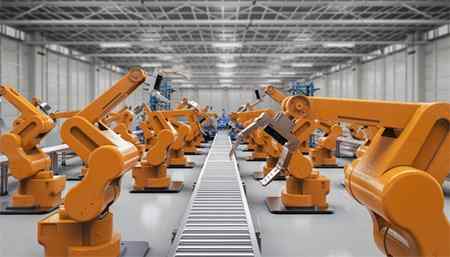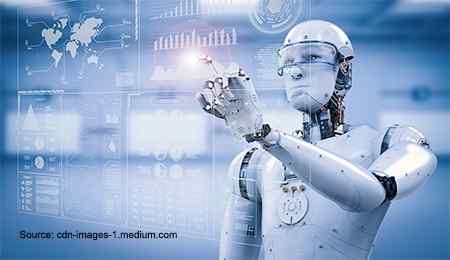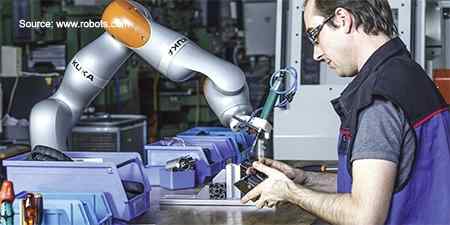Latest Trends In Industrial Robotics

In the recent decades, robots have revolutionized the industrial and manufacturing world, and are starting to leave their mark in our homes as well as in the wider world of business. Top firms are in a constant race to change the way robotics are implemented in everyday lives, which will lead us to a really exciting future. As we all know, robotic automation is a rapidly evolving technology and is only gaining popularity for their profitability and productivity.
Based on the latest trends in industrial robotics, below are few ways, we can expect robotics to transform our future.
1) Adoption Of Industrial Internet of Things (IIoT) Technology

Smart sensors and actuators will be increasingly deployed by these robots at the edge of production, to collect data that was earlier inaccessible to manufacturers. Currently, this trend is underway and will lead to new levels of efficiency and productivity. Also popularly known as Industry 4.0 or industrial internet, IIoT leverages the power of real-time analytics and smart machines to take advantage of the data, which dumb machines have produced in industrial settings over the years.
The driving idea behind IIoT is, apart from capturing and analyzing data in real time, smart machines are better than humans at communicating vital information that can be used to take business decisions accurately and in a faster way.
| Read More: The Rise of Soft Robotics: Recent Developments and Applications |
2) Big Data Analysis Becomes A Competitive Differentiator

On the factory level, robots will become a main source of information. However, the data collection is just one piece of the mystery. In order to act on it, manufacturers will have to implement systems to analyze and organize all of this information.
| Read More: Ethical AI in Action: How Robotic Companies Navigate the Future of Automation? |
3) Industrial Cyber security As A Priority

The future of industrial robotics can be seen in the field of cyber security even. The risk of cyber security increases, as robots become more connected to internal systems for data collection. To ensure reliable and safe production, manufacturers will be forced to invest heavily in cyber security and deal with vulnerabilities in their processes. Cyber-physical systems are on the rise and for a robot to be safe, it must also be secure. The future of industrial robotics is continuing to bloom because of the vision of smart, connected factories and Industry 4.0.
Networked robots and insightful data they generate are being used by savvy manufacturers to maximize production efficiency, simplify robot maintenance and improve product quality. Cyber risks mount as more robots are connected to each other, the cloud and the enterprise. Highly powerful and quick robotic systems come with serious safety concerns that are targeted by cyber attacks.

Cyber security, which requires everyone's vigilance, is no longer someone else's problem, but is everyone's responsibility in this age of the Industrial Internet of Things (IIoT).
4) Open Automation Architectures Will Be Implemented

The need for open automation architecture nurtures, as Robotic Process Automation (RPA) gains widespread adoption. To produce open documentation and standards, large industry players will work with industry organizations. This would make robotic integration easier, while improving product compatibility. With no complex system integration required, robotic automation interacts with the existing IT architecture. Just like how human being was doing task across application and systems, robotic process automation also allows organizations to automate task.
Robotic Process Automation is a software program which runs on an end user's mobile, laptop or PC. The main agenda behind RPA is to replace boring and repetitive clerical task performed by humans, with a virtual workforce.
5) Collaborative Robots Will Continue To Grow In Popularity

In comparison to the industrial counterparts, collaborative robots can work safely alongside humans and are often far cheaper. These robots will see greater adoption by manufacturers with strict ROI requirements, when they become more capable in tough industrial settings, over the time. Collaborative robots also incorporate hand guiding- teaching by demonstration, power and force limiting, safety-rated stop monitoring and speed and separation monitoring.
In the manufacturing sector, robotic automation has been a revolutionary technology. But over the next couple of years, it's still on the edge to change the industry.











